
The Band was a Canadian-American rock band formed in Toronto, Ontario, in 1967. It consisted of Canadians Rick Danko, Garth Hudson, Richard Manuel, Robbie Robertson, and American Levon Helm. The Band combined elements of Americana, folk, rock, jazz, country, and R&B, influencing musicians such as George Harrison, Elton John, the Grateful Dead, Eric Clapton and Wilco.
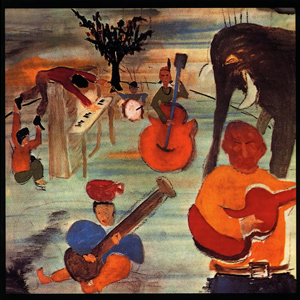
Music from Big Pink is the debut studio album by the Band. Released in 1968, it employs a distinctive blend of country, rock, folk, classical, R&B, blues, and soul. The music was composed partly in "Big Pink", a house shared by bassist/singer Rick Danko, pianist/singer Richard Manuel and organist Garth Hudson in West Saugerties, New York. The album itself was recorded in studios in New York and Los Angeles in 1968, and followed the band's backing of Bob Dylan on his 1966 tour and time spent together in upstate New York recording material that was officially released in 1975 as The Basement Tapes, also with Dylan. The cover artwork is a painting by Dylan.
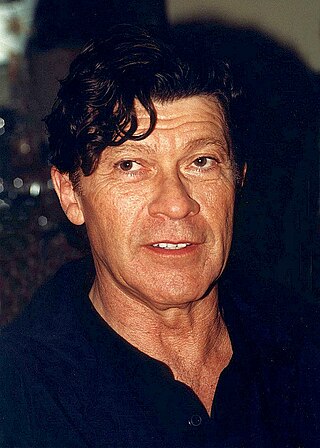
Jaime Royal "Robbie" Robertson was a Canadian musician. He was lead guitarist for Bob Dylan in the mid-late 1960s and early-mid 1970s, guitarist and songwriter with the Band from their inception until 1978, and a solo artist.

Richard Clare Danko was a Canadian musician, bassist, songwriter, and singer, best known as a founding member of the Band, for which he was inducted into the Rock and Roll Hall of Fame in 1994.

Mark Lavon "Levon" Helm was an American musician who achieved fame as the drummer and one of the three lead vocalists for The Band, for which he was inducted into the Rock and Roll Hall of Fame in 1994. Helm was known for his deeply soulful, country-accented voice, multi-instrumental ability, and creative drumming style, highlighted on many of the Band's recordings, such as "The Weight", "Up on Cripple Creek", and "The Night They Drove Old Dixie Down".
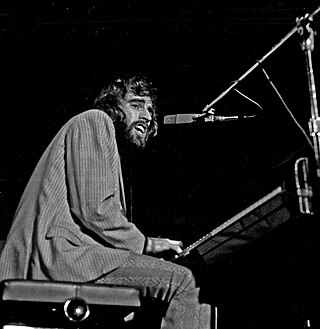
Richard George Manuel was a Canadian musician, singer, and songwriter, best known as a pianist and one of three lead singers in the Band, for which he was posthumously inducted into the Rock and Roll Hall of Fame in 1994.

Eric "Garth" Hudson is a Canadian multi-instrumentalist best known as the keyboardist and occasional saxophonist for rock group the Band, for which he was inducted into the Rock and Roll Hall of Fame in 1994. He was a principal architect of the group's sound, described as "the most brilliant organist in the rock world" by Keyboard magazine. With the deaths of Richard Manuel in 1986, Rick Danko in 1999, Levon Helm in 2012, and Robbie Robertson in 2023, Hudson is the last living original member of the Band.

Jericho is the eighth studio album by Canadian-American rock group the Band. Coming seventeen years after their "farewell concert", it was released in 1993 and was the first album to feature the latter-day configuration of the group, as well as their first release for the Rhino subsidiary Pyramid Records.
"This Wheel's on Fire" is a song written by Bob Dylan and Rick Danko. It was originally recorded by Dylan and the Band during their 1967 sessions, portions of which comprised the 1975 album, The Basement Tapes. The Band's own version appeared on their 1968 album, Music from Big Pink. Live versions by the Band appear on their 1972 live double album Rock of Ages, as well as the more complete four-CD-DVD version of that concert, Live at the Academy of Music 1971, and the 2002 Box Set of The Last Waltz.
"I Shall Be Released" is a 1967 song written by Bob Dylan.
"You Ain't Goin' Nowhere" is a song written by American musician Bob Dylan in 1967 in Woodstock, New York, during the self-imposed exile from public appearances that followed his July 29, 1966 motorcycle accident. A recording of Dylan performing the song in September 1971 was released on the Bob Dylan's Greatest Hits Vol. II album in November of that year, marking the first official release of the song by its author. Earlier 1967 recordings of the song, performed by Dylan and the Band, were issued on the 1975 album The Basement Tapes and the 2014 album The Bootleg Series Vol. 11: The Basement Tapes Complete.
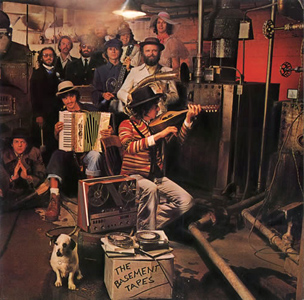
The Basement Tapes is the sixteenth album by the American singer-songwriter Bob Dylan and his second with the Band. It was released on June 26, 1975, by Columbia Records. Two-thirds of the album's 24 tracks feature Dylan on lead vocals backed by the Band, and were recorded in 1967, eight years before the album's release, in the lapse between the release of Blonde on Blonde and the subsequent recording and release of John Wesley Harding, during sessions that began at Dylan's house in Woodstock, New York, then moved to the basement of Big Pink. While most of these had appeared on bootleg albums, The Basement Tapes marked their first official release. The remaining eight songs, all previously unavailable, feature the Band without Dylan and were recorded between 1967 and 1975.
"Tears of Rage" is a song with lyrics written by Bob Dylan and music by Richard Manuel. Dylan and the Band first recorded the song in 1967, but it was not released until 1975 on The Basement Tapes album. In 1968, the Band recorded it for their debut album Music from Big Pink.
West Saugerties is a hamlet in Ulster County, New York, United States and part of the Town of Saugerties.
"Santa-Fe" is a song that was recorded by Bob Dylan and the Band in the summer or fall of 1967 in West Saugerties, New York. It was recorded during the sessions that would in 1975 be released on The Basement Tapes but was not included on that album. These sessions took place in three phases throughout the year, at a trio of houses, and "Santa-Fe" was likely put on tape in the second of these, at a home of some of the Band members, known as Big Pink. The composition, which has been characterized as a "nonsense" song, was copyrighted in 1973 with lyrics that differ noticeably from those on the recording itself.

Lost on the River: The New Basement Tapes is an album produced by T Bone Burnett featuring a collective of musicians recording under the moniker The New Basement Tapes—Elvis Costello, Rhiannon Giddens, Taylor Goldsmith, Jim James and Marcus Mumford.
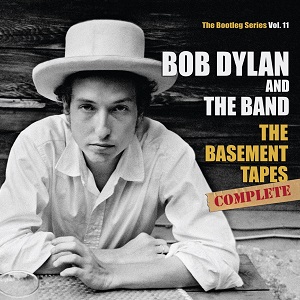
The Bootleg Series Vol. 11: The Basement Tapes Complete is a compilation album of unreleased home recordings made in 1967 by Bob Dylan and the group of musicians that would become the Band, released on November 3, 2014 on Legacy Records. It is the ninth installment of the Bob Dylan Bootleg Series, available as a six-disc complete set, and as a separate set of highlights – in a two-disc format common to the rest of the series – entitled The Basement Tapes Raw.
"Nothing Was Delivered" is a song written by Bob Dylan that was originally recorded by Dylan and The Band in the Fall of 1967 during the sessions that generated The Basement Tapes. The song was first released by The Byrds on their 1968 album Sweetheart of the Rodeo.












